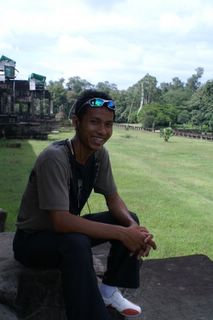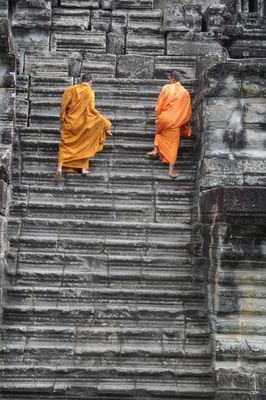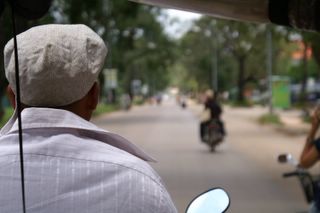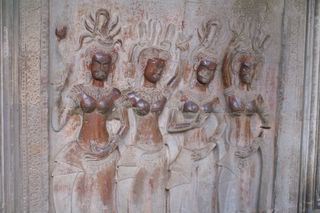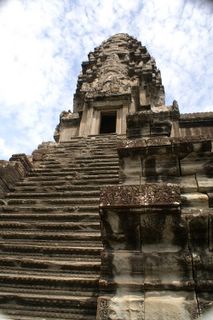This is my friend Aeang, a high school teacher from Hanoi, which he considers the best city in Vietnam. He was traveling alone during a school holiday for a week, and I kept running into him asking different nationalities of tourists different questions. Usually when you see someone who looks local asking questions of tourists in lesser developed countries, the questions go something like, "what country are you from, what guesthouse are you staying in, do you want to buy ______, where are you going, do you have transport, do you have any coins from your country...etc. So, I was surprised to hear Aeang asking Japenese tourists what their standardized testing was like for high school aged children and what percentage of high scorers opt not to go to college. Or asking the French couple how to say "Entemologist" in French. He asked me to take his photo, and I noticed he was decked out in all the modern tourist garb. Digital camera, cell phone, mp3 player, sporty duds...unfortunately, there is such a huge economic gap between Cambodia and the rest of the world that these features really stand out on someone who seems remotely local. The next time I ran into him was at one of the relief panels and he was describing the depths of the Khmer empire when Ankor was built. It extended into China, southern Vietnam, Laos, and Thailand. He walked and talked with me for hours. While some of the information I took with a grain of salt, such as the Khmers being 7 foot tall, explaining the large holes in the huge stones that formed the temple (because the giants could pick them up with these finger grips), most was pretty informative and aligned with what I'd read. Even more interestingly, over freshly hacked coconuts for a drink, I asked him about Cambodia in the 1970's during the Khmer Rouge. He spoke in hushed tones...I know it is taboo to mention the subject to Cambodians, but thought he might take a teacherly approach to a quiet conversation after the time we'd spent talking history. Very sad...but I made a new friend and he provided excellent company for exploring Ankor Wat.

